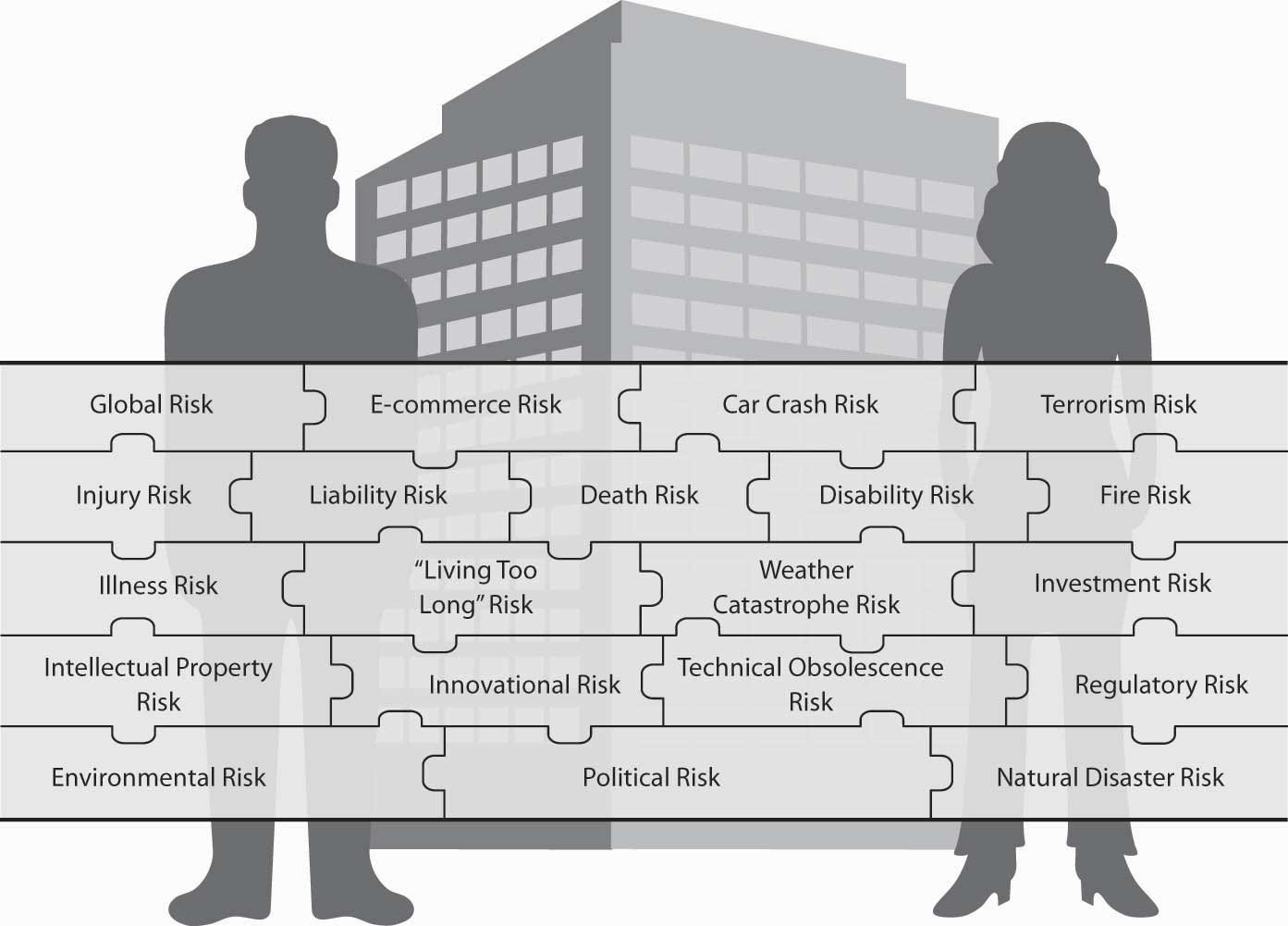This is “Links”, section 1.1 from the book Enterprise and Individual Risk Management (v. 1.0). For details on it (including licensing), click here.
For more information on the source of this book, or why it is available for free, please see the project's home page. You can browse or download additional books there. To download a .zip file containing this book to use offline, simply click here.
1.1 Links
Our “links” section in each chapter ties each concept and objective in the chapter into the realm of globally or holistically managing risk. The solutions to risk problems require a compilation of techniques and perspectives, shown as the pieces completing a puzzle of the myriad of personal and business risks we face. These are shown in the “connection” puzzle in Figure 1.1 "Complete Picture of the Holistic Risk Puzzle". As we progress through the text, each chapter will begin with a connection section to show how links between personal and enterprise holistic risk picture arise.
Figure 1.1 Complete Picture of the Holistic Risk Puzzle

Even in chapters that you may not think apply to the individual, such as commercial risk, the connection will highlight the underlying relationships among different risks. Today, management of personal and commercial risks requires coordination of all facets of the risk spectrum. On a national level, we experienced the move toward holistic risk management with the creation of the Department of Homeland Security after the terrorist attacks of September 11, 2001.See http://www.dhs.gov/dhspublic/. After Hurricane Katrina struck in 2005, the impasse among local, state, and federal officials elevated the need for coordination to achieve efficient holistic risk management in the event of a megacatastrophe.The student is invited to read archival articles from all media sources about the calamity of the poor response to the floods in New Orleans. The insurance studies of Virginia Commonwealth University held a town hall meeting the week after Katrina to discuss the natural and man-made disasters and their impact both financially and socially. The PowerPoint basis for the discussion is available to the readers. The global financial crisis of 2008 created unprecedented coordination of regulatory actions across countries and, further, governmental involvement in managing risk at the enterprise level—essentially a global holistic approach to managing systemic financial riskRisk that affects everything, as opposed to individuals being involved in risky enterprises.. Systemic risk is a risk that affects everything, as opposed to individuals being involved in risky enterprises. In the next section, we define all types of risks more formally.




